Installation
DIY installation
Contract required
No
Voice assistant
Amazon Alexa, Google Assistant
Additional fees
Monthly monitoring fee
Service bundles
N/A
Score Breakdown
Performance 8/10Usability 8/10Features 7/10Design 9/10
Pros
- Easy to install and operate
- App works well for new users
- Compact devices
- Self-monitoring plan
- AI and live guard monitoring options
- Accurate sensor testing
Cons
- Limited smart home integrations for third party devices
- Some type of subscription needed for key features
The home security category continues to be a competitive mix of professionally installed services and DIY options. Among them, SimpliSafe takes a hybrid approach with devices that are easy to set up and install yourself combined with the option of 24/7 professional monitoring, including AI face recognition and live guard services for keeping an even closer eye on your property.
While SimpliSafe’s offerings haven’t changed much since our previous tests in the 2020s, the new services are interesting and the limited smart home support has gone through a couple of changes. Prices have increased at all levels, but SimpliSafe remains a go-to- DIY system for homeowners who want something they can easily manage to watch access points, sense motion indoors and watch for fires or CO leaks. Add-ons like cameras greatly extend professional monitoring options but aren’t necessary for the basics.
Current competitors, including Ring, Wyze, Abode, Arlo and others, have worked to muscle their way into the DIY security market in recent years, so it’s worth shopping around to find the best security camera on its own. Still, as one of the most well-rounded systems on the market — and one that doesn’t require you to call a salesperson to hear what it’ll cost to set up — SimpliSafe is an attractive and straightforward option for home security shoppers.
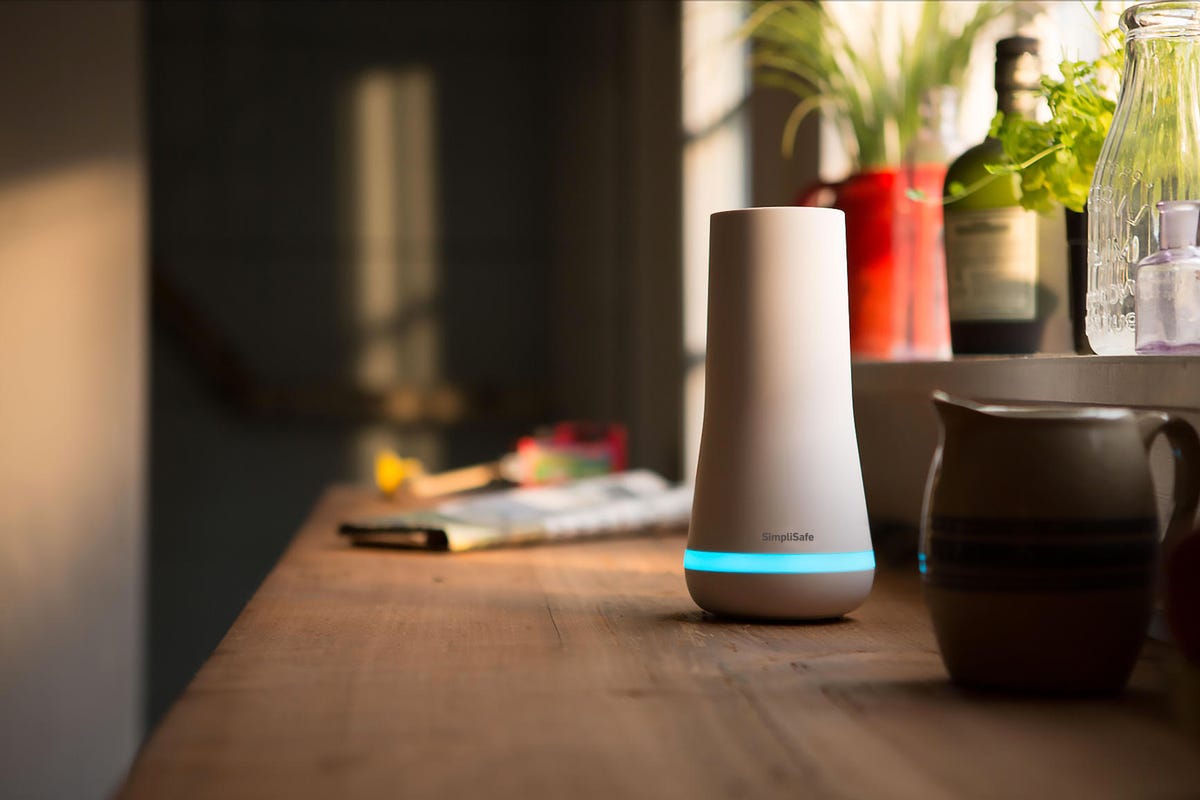
SimpliSafe packages and basics

SimpliSafe kit on table.
SimpliSafe Home Security has quite a track record. It won a CNET Editors’ Choice Award back in 2014 after exploding onto the still-burgeoning DIY home security scene. Then in 2018, when the third-gen system launched, it impressed us again — now SimpliSafe is back with major updates with AI detection, face recognition and active guard services, keeping it easily near the top of our DIY recommendations.
SimpliSafe’s home security packages start at $250 with “The Foundation,” technically speaking, but you can almost always find them at steep discounts on the company’s site. At the time of today’s update to this review, for instance, a Veteran’s Day sale has the basic package at only $100 and the most generous “Beacon” kit (which includes two outdoor security cameras in addition to the base station, two motion detectors and four entry sensors) costs $292. I’ll do a more thorough breakdown of the prices compared with competitors later in the review, but suffice it to say, it’s a solid deal.
The most current kit I tested in 2024 is similar to “The Herald” kit but includes a little bit of everything, from entry sensors to a leak detector, panic button, glass break sensor, additional siren and an indoor camera. The packaging and design remain incredibly DIY-friendly.
Purchase and installation
In addition to purchasing complete kits, you can also build your own custom system with the specific sensors that make sense for your living space. To do so, you’ll start with the mandatory base station and keypad then add additional devices a la carte. Here’s another full menu for a custom system we tested in the 2020s so you can see how purchasing looks:
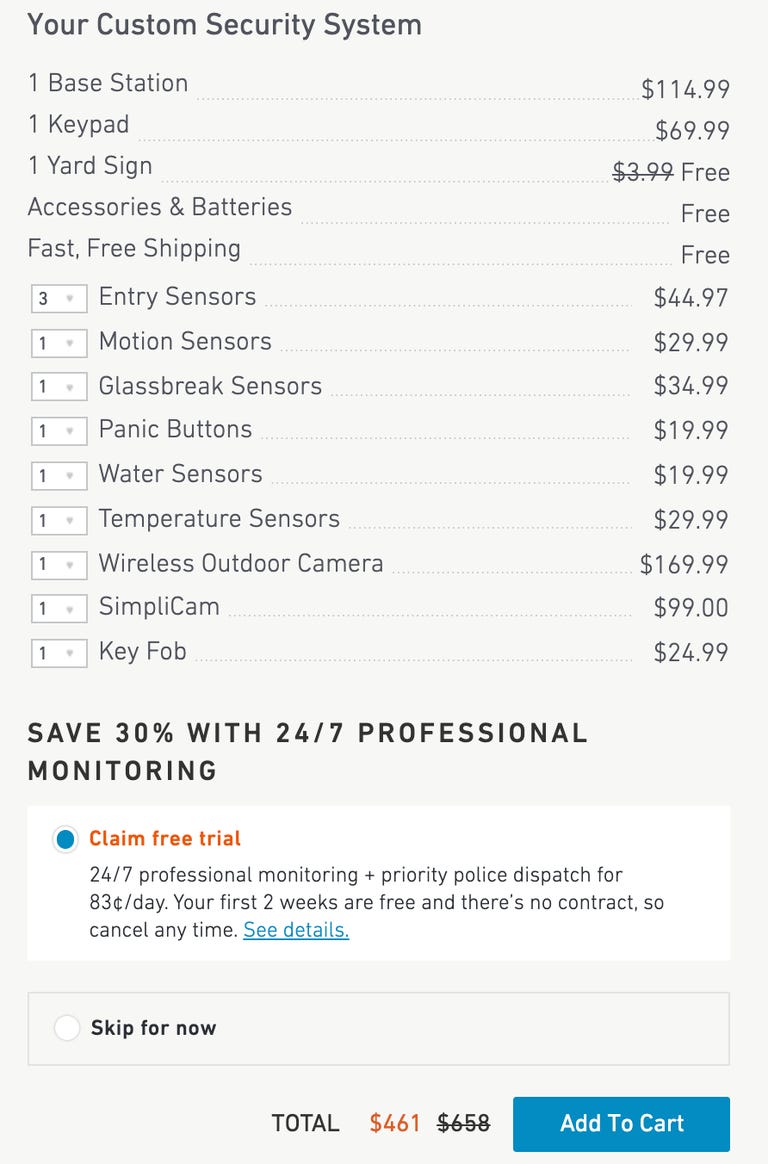
The $169 video doorbell is purchased separately from your security package, oddly enough — which brought my total, with the promotion, to $630.
Once your system arrives, it’s up to you to install it yourself. SimpliSafe made this really, really easy. Each sensor comes with a preapplied sticky tab on its detachable backs. Just peel and stick — no wiring necessary. If you need to move something, the sensors detach from their backings, exposing the sticky tabs for easy removal that won’t damage your walls, which makes the system great for renters, too. The only thing you’ll need to plug in is the base station.
That said, SimpliSafe does offer professional setup help for $125 if you need it, but says 97% of its customers set their systems up themselves.
With your sensors in place, you’ll put the keypad into pairing mode, then pair everything up by pressing a button on each sensor, then giving it a name on the keypad. From there, you can make any final tweaks to the system settings by logging in to SimpliSafe’s web portal, or by using the SimpliSafe app (which I’ll discuss more below). The whole process took me less than an hour; it’s not quite as simple as with Abode but it’s about as painless as self-installs can get.
In my latest tests, I found the 3M adhesive to be as reliable as ever for indoor placement. Since the adhesive bond is immediate and strong, users need to handle placement carefully, especially for entry sensors which have two parts that need to align precisely. However, one the highlight’s of SimpliSafe’s system is how compact the sensors are, easily beating out bulkier versions from ADT+ or Ring Alarm. That makes them easier to fit on a wider variety of doors, windows and cupboards.
Subscriptions
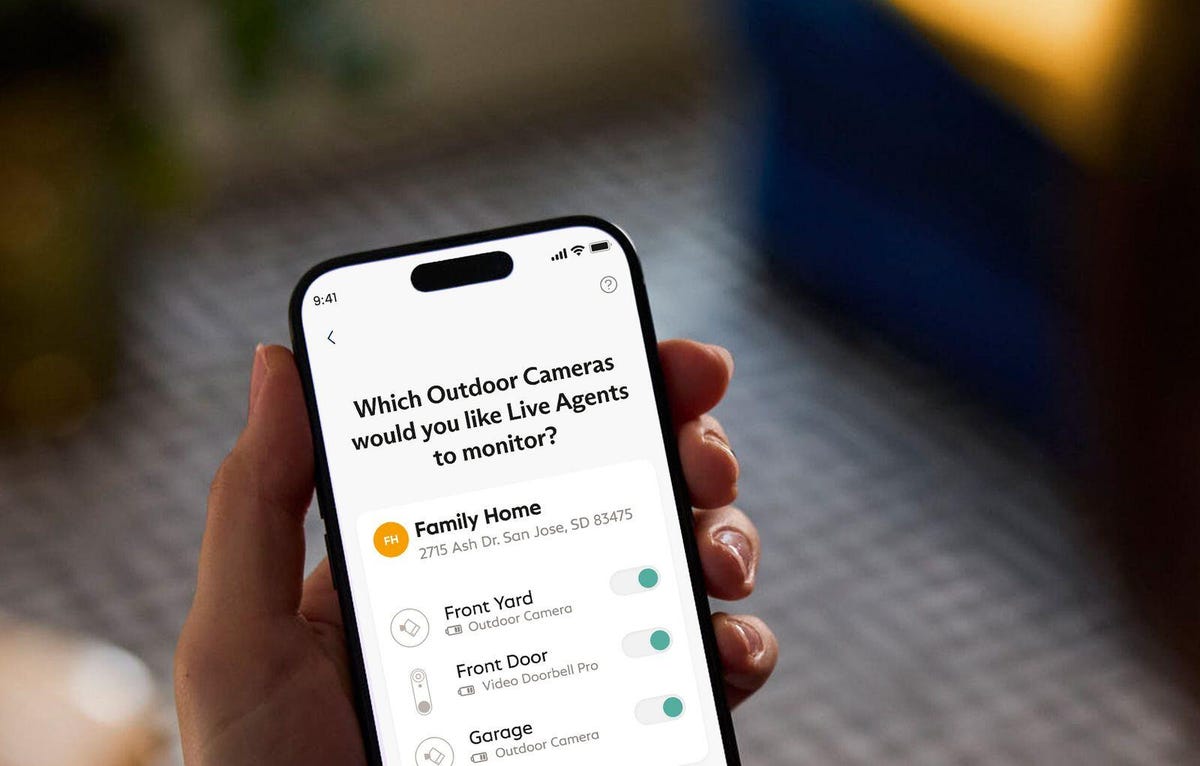
SimpliSafe is one of the first companies we’ve seen to combine AI facial recognition with professional home monitoring centers.
SimpliSafe has reinvented its subscription services as of 2024, with a new, broader range of options depending on what works best for DIY homeowners or those who want some of the most in-depth professional monitoring we’ve seen. Packages currently include:
Self-monitoring: This subscription essentially adds cloud video storage, notifications and remote control for around $10 per month. We highly recommend it even if you aren’t interested in professional monitoring, but it’s not required.
Standard monitoring: Standard adds 24/7 dispatch capabilities right alerts and the ability to cancel false alarms directly from texts, plus a cellular backup in case of blackouts, for around $20 per month.
Core: Core provides professional monitoring from a monitoring center and related benefits for around $30 per month, including the ability for agents to see captured video clips and use two-way audio to communicate if necessary. You’ll need a SimpliSafe camera to take full advantage of this plan.
Pro: Pro requires SimpliSafe’s newest outdoor camera for around $50 per month, but adds Active Guard monitoring with agents that can use live views and take control of the outdoor camera to handle a threat. Active Guard monitoring is limited to the nighttime hours in your region.
Pro Plus: For about $80 per month, you can upgrade to an Active Guard monitoring that can keep watch 24/7 instead of just from 8 p.m. to 6 a.m.
Note that the Active Guard subscriptions make use of SimpliSafe’s new AI technology. These algorithms watch through your outdoor security camera and work to recognize unusual behavior so it can alert live guards to suspicious activity. It also enables SimpliSafe’s facial recognition, which allows you to add familiar face profiles for people that often visit your home. If guards or the AI see a familiar face, they will work to ignore it to help improve privacy. This feature is disabled in certain areas like Illinois, Texas and Portland, Oregon.
The SimpliSafe base station quarterbacks all of your sensors and houses a siren as well as Wi-Fi and cellular connections to the company’s monitoring service.
Device performance and settings
The SimpliSafe Home Security system’s sensors keep in constant contact with the base station, which relays everything to your phone (or, in an emergency, to authorities) via Wi-Fi. The base station also includes a 24-hour battery backup and a fee-free cellular connection to the company’s monitoring service — if the power or the Wi-Fi ever goes out, it’ll still be able to call for help.
SimpliSafe’s approach also separates the most sensitive system components from the keypad, the part that beeps and asks for a PIN if the alarm is ever tripped. In many cases, that beeping keypad is probably the first thing that an intruder would try to smash in order to shut down the system, but doing so wouldn’t make a difference.
The system offers three modes during use: Off, which is pretty self-explanatory; Away, which arms the sensors; and Home, which leaves some sensors on but disarms things like motion detectors so you can move around inside without setting anything off. By default, SimpliSafe gives you 30 seconds to disarm the system upon entry (you can customize that length of time in the app).
If you’re paying $10 or more a month for the full system controls, you’ll be able to arm and disarm the system from the SimpliSafe app, or arm it on your way out the door with a quick voice command to Alexa or Google.
Our test dog Dolly wasn’t able to set off the SimpliSafe motion detector. It does a great job of distinguishing between people and pets.
If the alarm is ever tripped, your phone will ring and a SimpliSafe representative will ask if everything’s OK. They’ll also ask for your safe word — a secret password of your choice that acts like an extra vocal PIN for the system. Fail to give it, and they’ll still send the authorities, no matter what else you say. Like the duress code, it’s a nice, extra layer of protection.
SimpliSafe also lets you specify which sensors will trigger an entry delay and which ones will trigger an instant alarm. You’ll probably want a chance to disarm the system if you trip a contact sensor or a motion detector, for instance, while a glass break sensor alert might merit an instant alarm with no delay (again, you can personalize this, in case you’re prone to dropping plates or have kids around the house).
You can also set secret alerts that can send you a SMS, email or app notification without tripping the alarm at all. Hide a contact sensor on the inside of your liquor cabinet, for instance, and you’ll get an alert if your teenager ever tries to sneak a sip.
The newest generation of SimpliSafe cameras

SimpliSafe’s latest outdoor camera enables a variety of powerful AI features.
SimpliSafe’s system has been among our favorite home security systems for a number of years — but that doesn’t mean it doesn’t have room to grow. Sure, the sensors — those crucial bits of connective tissue for any good home security system — offer solid value for the price, but the cameras aren’t quite as unmitigated a success.
These days $99/$150 indoor cameras and $170 video doorbells are fairly standard devices, even when you’re buying them standalone from top brands like Google Nest, Amazon Ring or Arlo — and SimpliSafe’s options simply don’t stand up to those top devices.
The indoor cameras, available both wired and wireless, come with all the basics, like a 120-degree field of view, motion detection, two-way audio and night vision. It includes a privacy shutter, like Arlo’s indoor camera, and person alerts. Guard’s can’t look through the live view on these cams, and the design is quite awkward compared to competitors, but if you’re sticking with SimpliSafe they are the only options compatible with the SimpliSafe app.
The 2nd-gen SimpliSafe outdoor camera, at $200, is required for all the Active Guard bells and whistles as well as the AI features, so if you want professional monitoring you’ll want at least one of these cams. They come with sirens, lights and audio that can be operated by guards at will.
System performance
SimpliSafe’s approach to DIY security is appealing, but it’s all for nothing if the sensors don’t work reliably well. They continue to perform well, including motion, entry, leak detection and smoke/carbon monoxide sensors.
The open/closed contact sensors were the most reliable, triggering the alarm each and every time they were supposed to. The motion detector performed well, too. It was able to distinguish between people and small pets just fine, and it caught our reviewer walking through the room about 95 percent of the time. The other 5%: a test where something seemed to hiccup and it was a few minutes before any motion was sensed. That wasn’t a great result, but it was the only true misfire across several days of testing.

SimpliSafe’s entry sensors remain DIY-friendly during setup and testing.
The leak detector (water sensor) was another standout, firing off an alert as soon as it entered water in each of my tests. The one drawback to that level of sensitivity — it also went off at one point when someone picked it up and moved it. That’s not a huge deal though, especially for something you’re going to toss under your sink and forget about.
Next up, the freeze detector (temperature sensor). By default, it will send an alert if it ever senses ambient temperatures below 41 degrees F or above 95 degrees F, but you can set those thresholds to whatever points you like. It worked as expected over the long run, but it only takes readings and sends them to the base station once per hour. That’s a touch more sluggish than you’d like for especially sensitive temperature monitoring, but for most people, it’ll do the job you need it to do.
The final barrage of tests was aimed at the glass break sensor. Like the name suggests, it’ll sound the alarm if it ever hears a window break — and SimpliSafe claims that its calibrations are precise enough to distinguish between a broken window and a broken plate. Translation: It was time to break some stuff!
We started by trying to trick the sensor into sounding a false alarm. We tried dropping a light bulb, loudly clinking glassware together, playing glass-breaking sound effects at full volume and even tossing keys against the wall, as one follower suggested on Twitter. Nothing worked — the glass-break sensor wasn’t fooled.
That all made for a promising start, but then we tried breaking a small pane of actual glass. (We stole it from a picture frame — apologies to the CNET Smart Home staging crew!) To our surprise, that didn’t set the glass break sensor off, either. Maybe it thought it was a plate?
The team at SimpliSafe suggested we try dialing the sensitivity up — turns out there’s a slide switch on the back of the sensor with three settings. We set it to “high” and tried again, this time with an actual window purchased at a junk store. That did the trick — across multiple tests, the glass break sensor caught us smashing the window each and every time.
In the end, we’d call that a successful result, but we’d definitely recommend starting with your glass break sensor set to “high” and dialing down from there as needed. As for us, the glass break sensor might be one that we’d be comfortable skipping.
Smart home compatibility
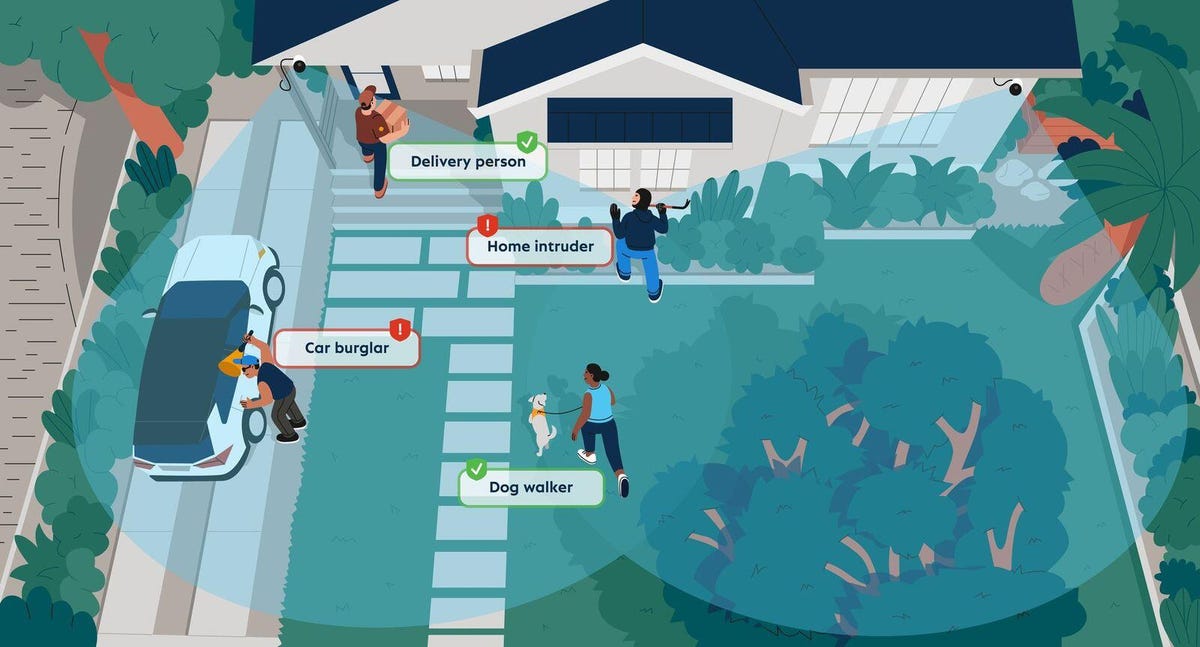
With a close-enough look, SimpliSafe’s new AI will be able to recognize and ignore friendly faces while the system is armed.
Something else worth thinking about as you’re shopping for a home security system is whether you’re interested in something that will tie in with a larger home automation platform. If so, SimpliSafe comes with limitations compared to other systems like Abode or Vivint.
Sure, the SimpliSafe system works with Alexa and Google Assistant, and it offers integration with August smart locks, but that’s all. If you want to add things like smart bulbs and smart switches to your setup, you’ll have to control them separately from your security system. As mentioned already, you’re also stuck with SimpliSafe’s cameras — and there are plenty of cameras that we like better.
SimpliSafe’s standalone home security system remains excellent, but it’s held back by this lack of third-party compatibility, which is important to many homeowners. Some home security brands follow suit, but others offer much more device compatibility, so consider your smart home plans before you buy.
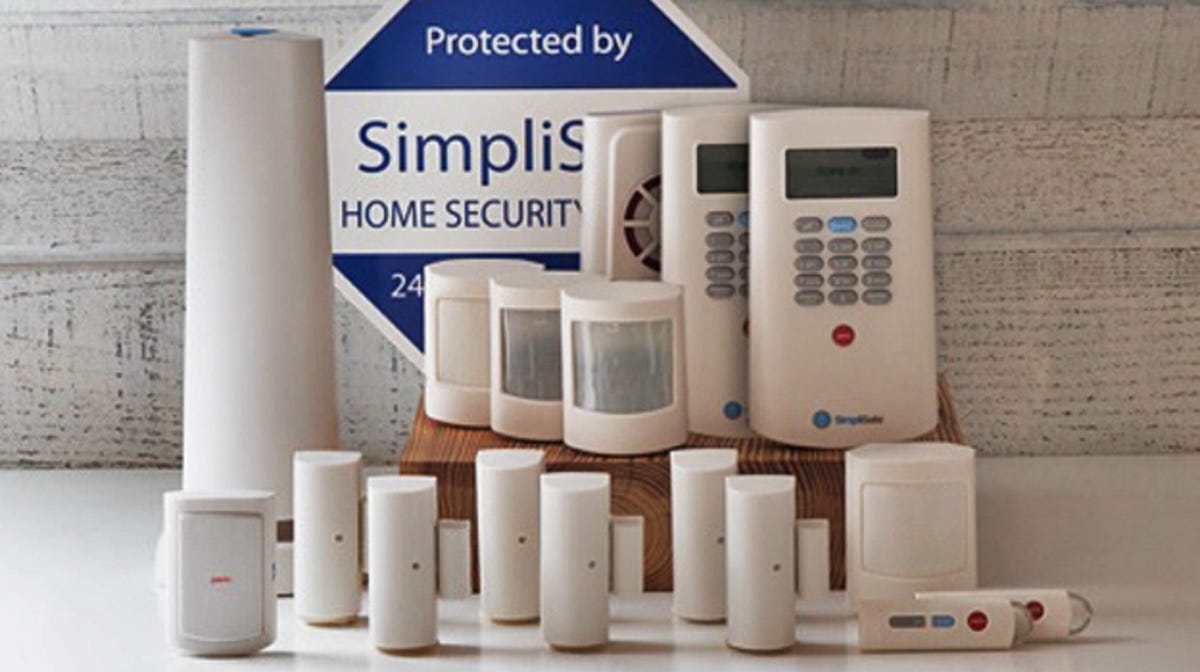
The old SimpliSafe system in its awkward teenage years.
Encryption and protection
With an old-school, wired security system, you’d have to live with the worry that someone could deactivate your system by cutting a wire. Wireless systems like SimpliSafe eliminate that issue — but what if someone manages to block the system’s wireless transmissions? Wouldn’t that have the same effect? As commenter Joe Duarte points out, security researchers have no shortage of questions like those about SimpliSafe and other systems like it.
We looked into jamming back in 2015, and tested SimpliSafe’s protections against it. The company says that it uses a proprietary antijamming algorithm to detect if a sophisticated thief is trying to mess with your system. If it does, SimpliSafe will immediately notify you about it. That’s what happened when we tested it out. With the right equipment, we were able to block a transmission to the base station, but not without SimpliSafe sending us an alert informing us of the jam.
As for other concerns like replay attacks where a hacker would try to intercept your keypad’s code, SimpliSafe says that all system transmissions are encrypted, and also points out that its hardware allows for over-the-air firmware updates, making it much easier for the company to respond to evolving threats and vulnerabilities in real time.
The proof of these efforts and similar encryption is in SimpliSafe’s history of privacy and security. Compared to other security brands, SimpliSafe remains largely free of data breaches, cloud data snafus, sudden security vulnerabilities and spying or blackmail scandals. It’s one of the safest picks if you’re concerned about these issues.
App performance

SimpliSafe’s app is relatively easy to use and manage.
SimpliSafe’s app is also quite DIY friendly. While it lacks the video walkthroughs of some apps, it does provide detailed descriptions for every step new users need to take and makes it clear what to do next (and why).
App controls are simple, but many settings options lie in the My System section, where you can explore each device and adjust everything from friendly entry chimes to entry and exit delays or how fast sensors respond. Overall, I appreciated the breakdown of information and how SimpliSafe managed to provide a lot of options without overwhelming the user — something that can be tricky with complex security systems.
New users will definitely want to spend some time in settings and visit key sections like notifications and entry delays during their first setup.
SimpliSafe Home Security: Final thoughts

SimpliSafe’s new friendly face tech is currently rare, but don’t be surprised if you start seeing it more often.
SimpliSafe’s approach combines do-it-yourself appeal with live monitored peace of mind. The SimpliSafe system offers excellent value relative to the competition, it’s remarkably easy to set up and use and it doesn’t feel (or look) like a compromise pick. Plus, the company has been busy adding new features and upgrading devices, especially if you are interested in paying for higher-tier, AI-supported professional monitoring.
We do have a couple of issues with SimpliSafe’s system, including the lack of third-party smart home support and a growing focus on pricier subscriptions. If this isn’t a concern then homeowners, especially those with smaller homes and a DIY preference, will find a lot to like.
Shopping around is always wise, but for most folks interested in straightforward home security, we feel confident saying that SimpliSafe is among the best options on the market.





